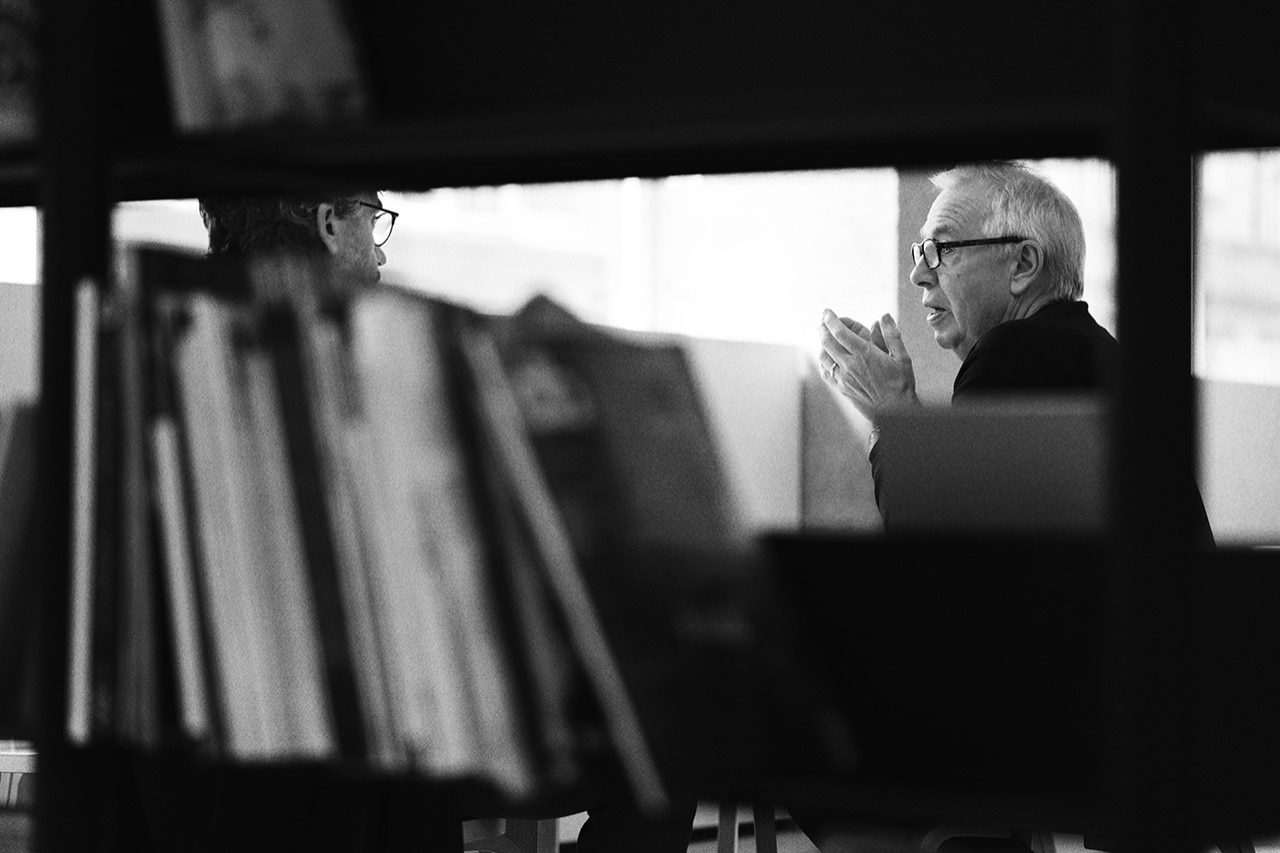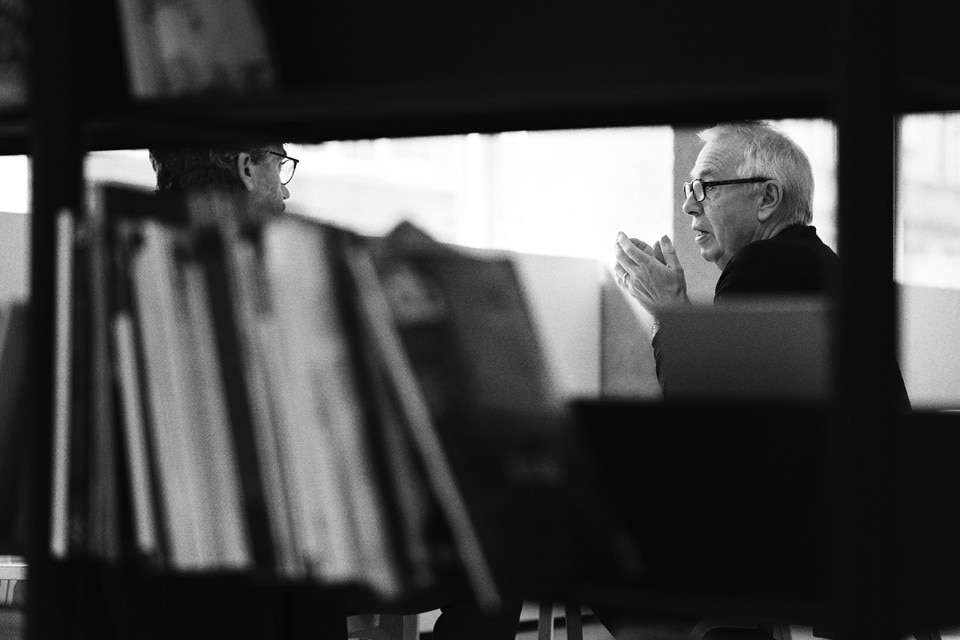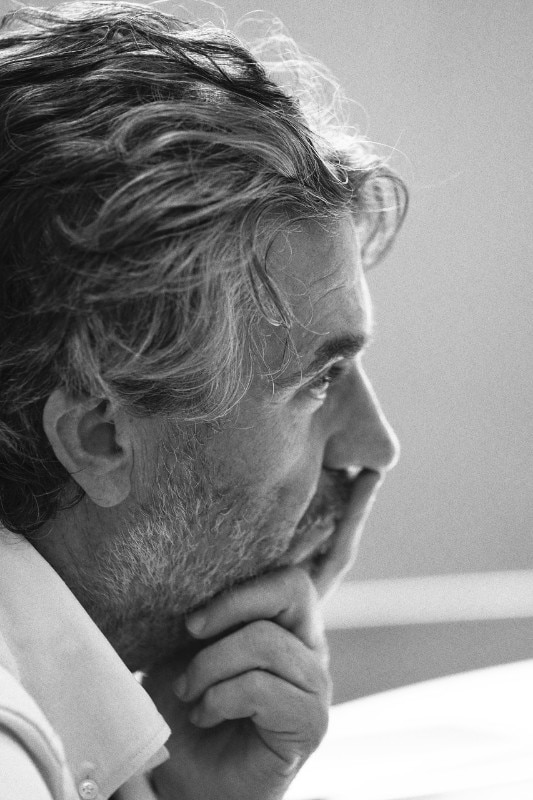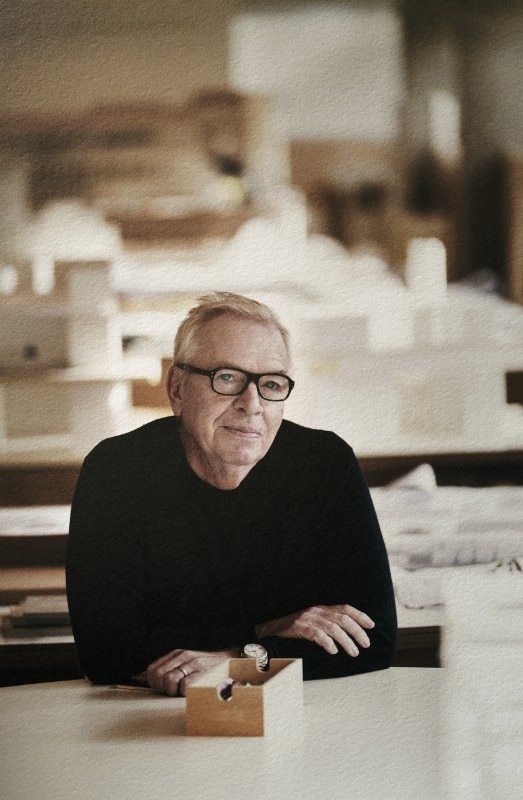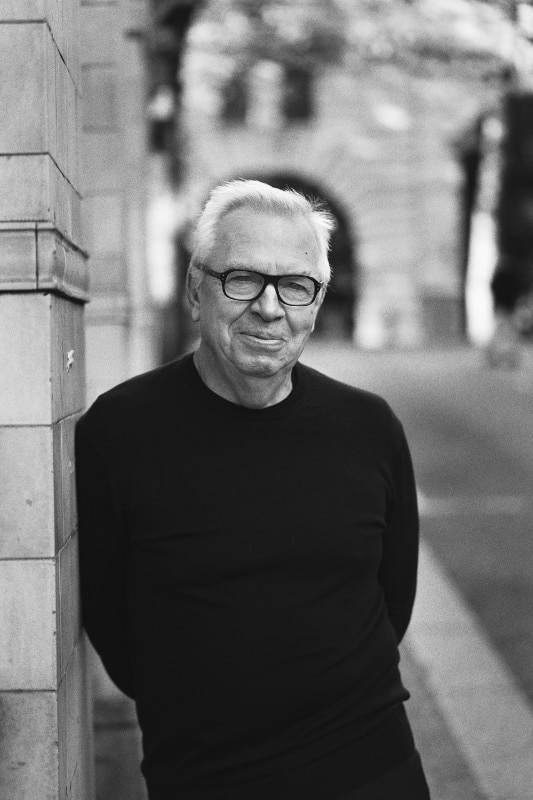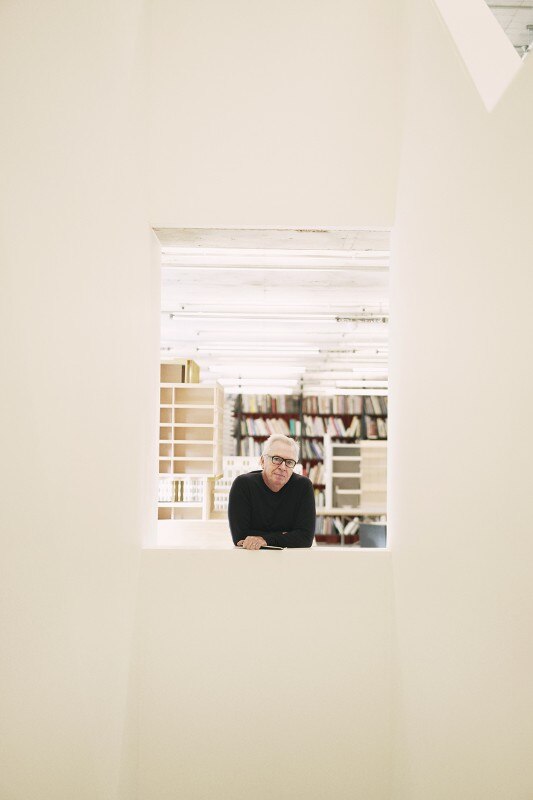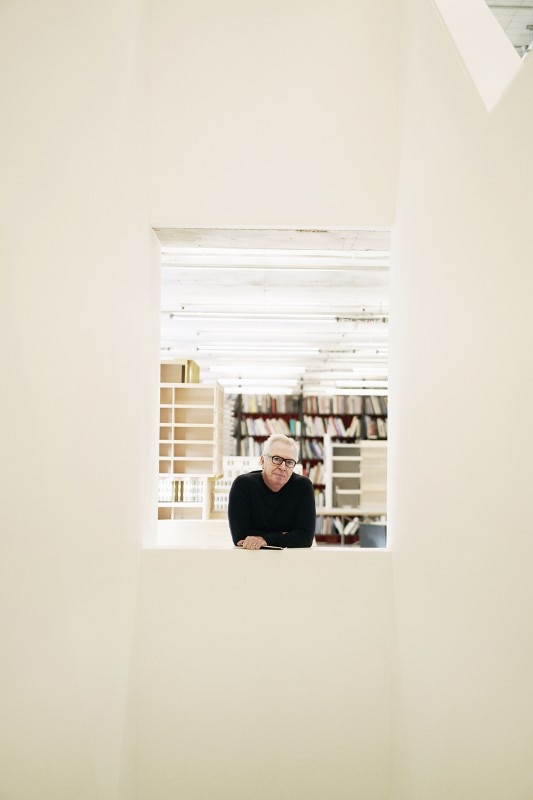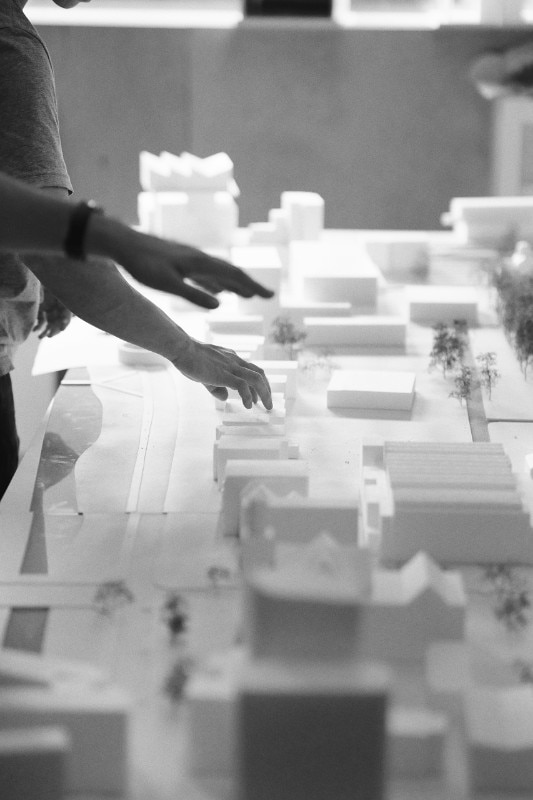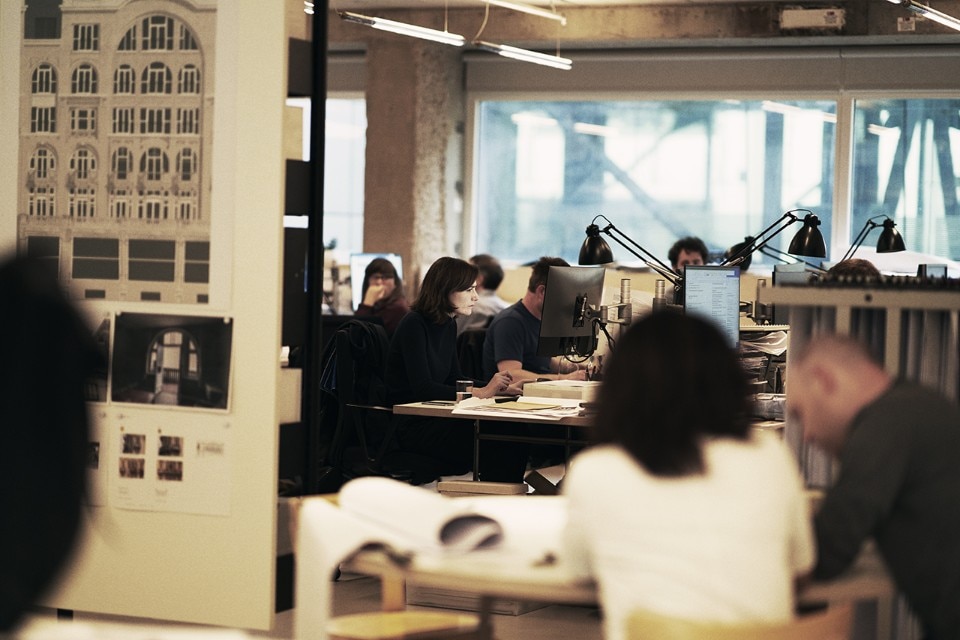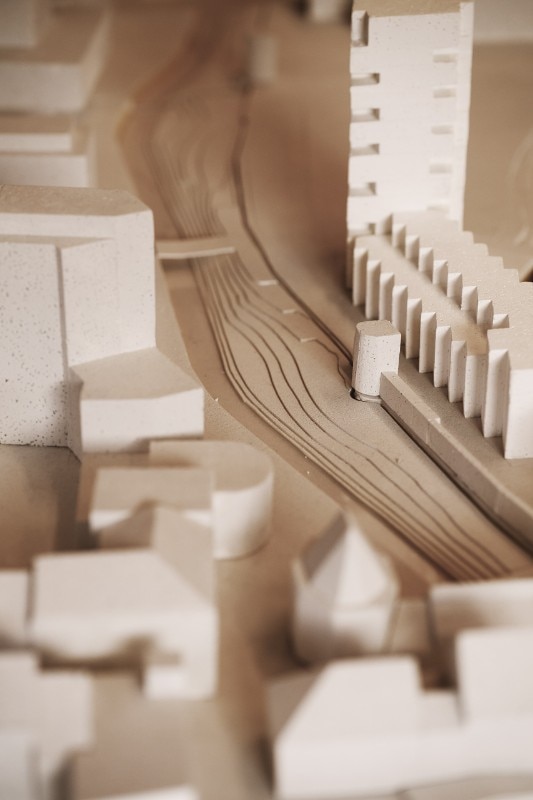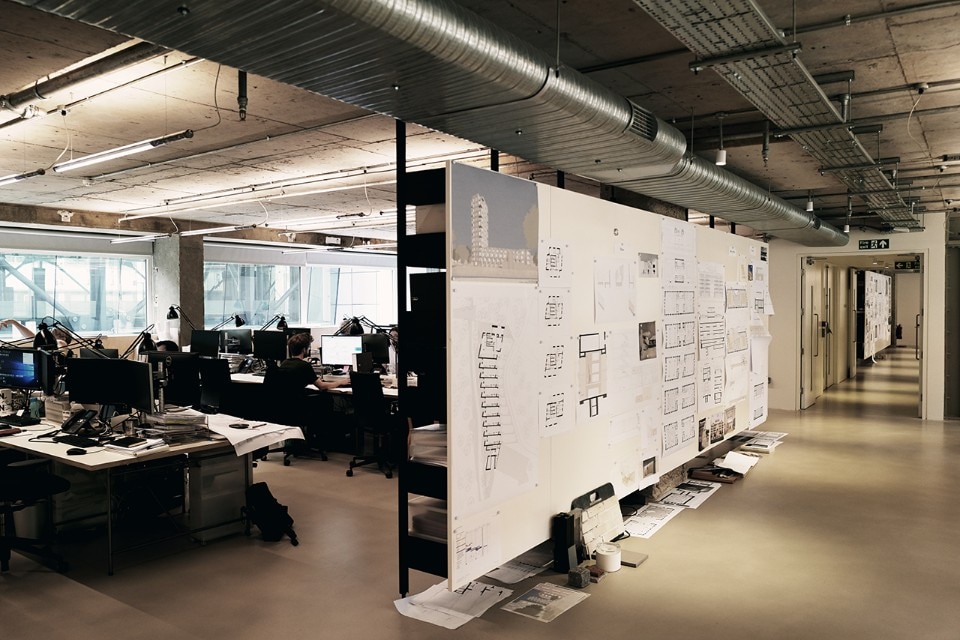Sir David Chipperfield is a British gentleman, an intellectual and an acclaimed architect who lives in London and works around the world. His British personality is tinged with a German feel for geometric order, a feisty Mediterranean spirit, a taste for Spanish music, and an Italian sense of humour – all of which make a good starting point for an interview.
As our guest editor for 2020, what does Domus mean to you?
On an anecdotal and autobiographic level, as a young architect in England in the 1970s and especially the 1980s, Domus was some sort of authority, a window to a much larger world. London felt a bit isolated in those days, and we might be going back to a similar mood now after Brexit. So Domus had big authority in a sense; you looked at it to know what was happening in architecture. Despite everything, in Domus and Casabella, Italy still has a sort of respect for architectural culture. Even if it’s not the home of architectural practice, it’s the home of architectural culture.
How does the Domus vision and authoritativeness as expressed in the 1970s, ‘80s and ‘90s fit in with current times, now that firms like yours communicate their work independently in a very powerful way?
It’s difficult to know whether certain things in one’s own attitude are changing because the world has changed or because we have changed. I would say the landscape has changed. In the 1980s, we didn’t have many vehicles to show us what was going on. Therefore, magazines like Domus were an opportunity for us to see the work of others. But now I would say now those opportunities are everywhere. I think the profession was also different in those times. There wasn’t so much happening. Things were more meaningful somehow; I don’t know why.
What was interesting about Domus at that time was that it tended to have a strong editorial opinion; it was critical. Under the direction of Mario Bellini and especially Vittorio Magnago Lampugnani, it had a sort of value. If you could get your work into Domus, it was a prize, an acknowledgement. You were in a club, and it was a legitimating club. The real power of Domus at that time was aspirational. From an English point of view, it gave us big access to things that were not in our perspective. In the 1980s, there wasn’t much cultural connection between the architectural community here and the European or global architectural community. Now, I would say there’s an incredible connection.
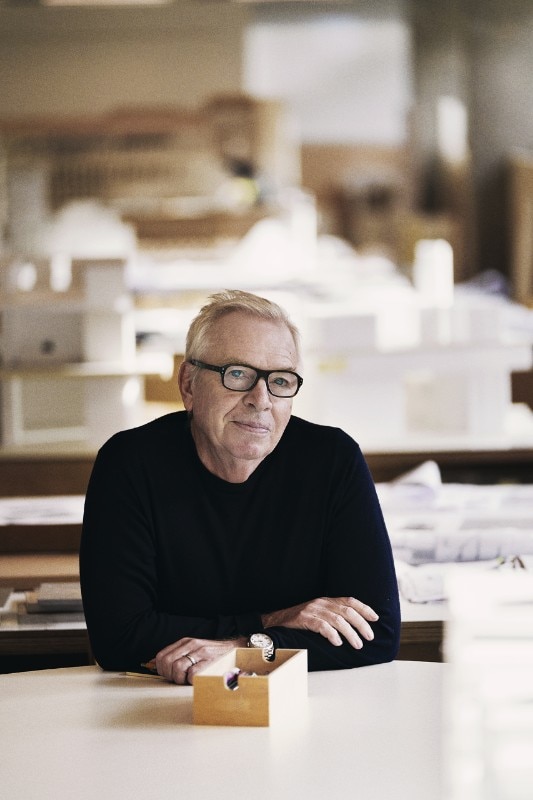
You’ve had an amazing career. You are very British, but you also work a lot in Germany and you are very interested in politics in Spain, where you participate in the civil movement of society. Is this a new thing in architectural practice or is it something that has always happened?
Again, it’s very difficult to judge whether these things are circumstantial or professional or genetic. I think there’s a practical circumstantial situation: becoming an architect in the early 1980s. There was a sense that there wasn’t much opportunity in England. I accepted the strategy of looking for work in a much more flexible way than maybe my teachers would have done.
My teachers were old-fashioned architects who believed an architect should design housing, universities and cities. For them, designing a shop would be a bit uninteresting. We were much more flexible and I suppose we were less expectant of opportunities. Accident took me to Japan because I designed an Issey Miyake boutique. So I went there and the first buildings I made were in Japan. I suppose that if you build outside of your culture, especially at the beginning, you feel a little bit responsible to justify why you should build in someone else’s culture. How can I justify this responsibility or privilege? This has always been my situation, whether working in Germany or Italy. It’s not your right. Which is strange because I think if you’re a doctor or an engineer, it’s not the usual professional situation to think that you’re not entitled to practice. But in architecture, we’ve grown up with an ambiguous position societally. We know we have professional rights, but we’re not so sure of our societal rights, because society tends to give them and take them away from us, so it’s unreliable.
I suppose that if you build outside of your culture, especially at the beginning, you feel a little bit responsible to justify why you should build in someone else’s culture. How can I justify this responsibility or privilege? This has always been my situation, whether working in Germany or Italy. It’s not your right
Is this also true for the urgency that has changed since you became an architect in the late 1980s? How do you feel about this new ecosystem in which architects have a different role, not only to make a building, a city, a villa, a museum, a shop, but also to carry responsibility towards society?
I’m sad that the profession isn’t given more responsibility or that we don’t have a more responsible role. We tend to be limited in our opportunities, and one of our skills is to be opportunists. I would say that all successful architects have a certain opportunistic ability.
We nearly have to find ways to practice. From the beginning, every office invents its own identity, professional strategy and method. So one of your talents as an architect is to work in a system that is not necessarily helping you. You have to be subversive and strategic. I suppose that would be the other consequence in my own autobiography, growing in an environment dominated by the voices of Margaret Thatcher and Prince Charles, and culturally architects were seen to be villains, negative. You had to try to rebridge this isolation. Maybe I was aware that the ability to find a communication through the work was a way of making the work significant.
The first building I did for the Rowing Museum made it clear that if I didn’t think about this bridge, the project wouldn’t be built. If I just did a very radical, modernist project that my contemporaries would congratulate me for, it would never be built.
Therefore, you have to think: why do people in England hate modern architecture? Partly they were right, because modern architecture wasn’t built very well. It contained no gesture to the people. I felt that that first project had to communicate, so I put on a pitched roof, which now doesn’t seem problematic but in 1986 or ‘87, this was quite a strange thing for a modern architect to do.
We were not allowed to do such a thing. I felt that if I didn’t put a pitched roof on it, this community would never accept it. Then the question became: could I make gestures towards a community with a more popular attitude and still be responsible to my own? Why not? And this was very interesting because it was very well received.
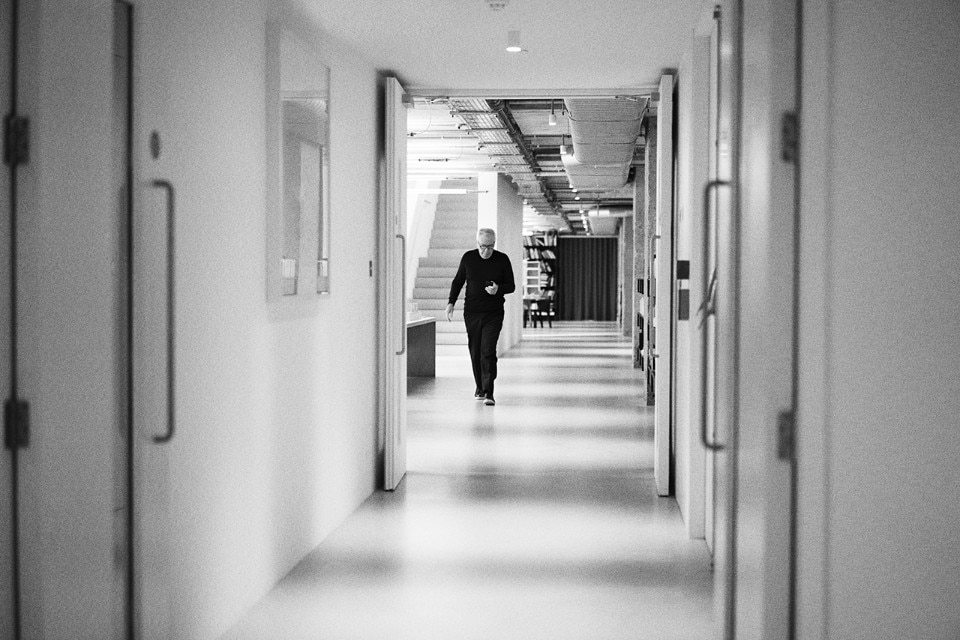
What are for you the three big challenges of our time?
Societal inequality, environmental sustainability, and connected to that is community, the fact that we have eroded the fundamental importance of community.
Do you intend to explore these three challenges in Domus?
It’s impossible to talk about architecture now without touching upon these subjects. I would love to be editing Domus 15 years ago and be a bit more innocent about these issues, but I think if we now have a situation where 50 per cent of the world’s population is living in cities and 50 per cent of that population is living in temporary accommodation, then our comfortable discussions about urbanism are a little bit strange. When we had conversations in the 1980s about urbanism, we would talk about social housing, but the concept was inclusive.
We believed that everybody would be permanently included in what a city should be. We didn’t imagine that 50 per cent immediately were not even going to be thought about. So we’ve moved away from when I was still enjoying this slightly utopian modernist mentality that architects and planners were going to save the world and build the world, build new communities, build new societies. In the intervening 40 years, we’ve become a sort of victim of the situation. We are trying to make the best of circumstances, which is very different to how architects in the 1960s and ‘70s felt. Now, we don’t imagine we are going to solve these problems, but why not try? Because nobody else is going to solve them. In this country at the moment, we have 4 million children in poverty, in England. We’re not talking about Bangladesh; we’re not talking about somewhere else. I’m sorry, but this is a statistic that should probably be the first item of every news broadcast every day.
You’re right, in Milan, 4,000 children do not have regular meals.
So if I’m an architect, is that my problem? No, but we realise that these problems are getting bigger. It’s the same with the environment. If our profession – the built environment and construction – accounts for nearly 40% of CO2 emissions, how can we say we’re not involved? Now, at the moment, our defence is that we’re at the end of the food chain.
We’re the ones trying to do something at the end. You’re designing a building; can you make the windows thermally better? Can you put some solar panels on the roof? Can you improve it and make the problem less? We are not at the beginning of the food chain saying we shouldn’t be building there. You can say, “But it’s not our position,” but nobody else is doing it. We’ve lost this tendency to be part of a bigger planning collaboration and we have to be part of this. How much can we be part of it? I don’t know, but we should be more than we are. We should be thinking about social housing much more, about the environment much more, about the community much more. We used to be able to ignore it, even ten years ago. It was okay; you could have a narrative. But I think now, you can’t just have simple words.


